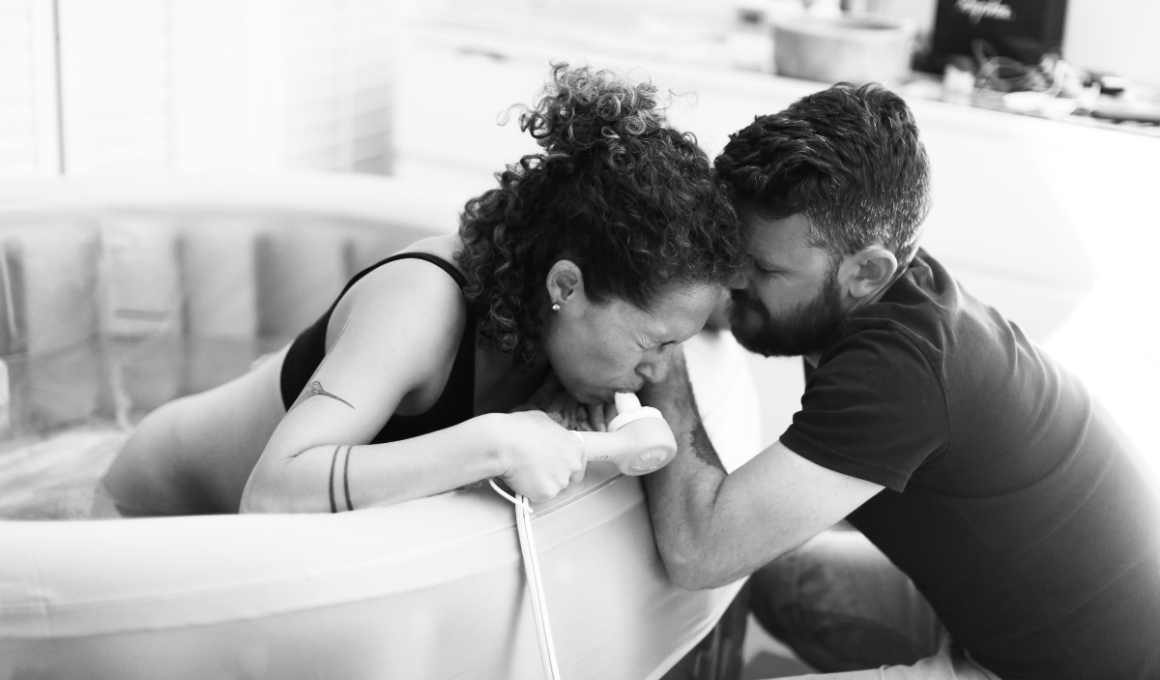Hospital birth is more common, considered safer and in most cases is highly preferred due to the availability of health practitioners and medical equipment to carry out the process. However, home birth is another great option that pregnant women can decide to go with. As with everything in life, birthing a child at home has both pros and cons that the expecting mom should know beforehand. This type of birth setting must be approved by your doctor who will make sure you do not have any risk or complications that may require having your baby in a medical facility. It should also be noted that there is a possibility that the mom may still be transferred to the hospital.
Reasons some women choose home birth
- The desire to give birth in a familiar setting surrounded by loved ones.
- A desire to give birth in a setting with few medical interventions such as labor induction or augmentation, use of drugs, electronic fetal monitoring (EFM), etc.
- Wanting to be free and be in control of the process – such as deciding the best and comfortable position, deciding to take your bath, etc.
- Lack of easy access to transportation, long-distance from the hospital, or lack of interest in available hospitals.
- To save money.
- Cultural and/or religious concerns.
Who should avoid home birth?
- Women with multiple babies.
- Women whose baby is in a breech position
- You’ve had a previous C-section
- Women with or who have had a history of pregnancy complications.
Why some pregnant women are transferred to the hospital during a home birth
Your doctor or health provider would have told you that there might be possibilities of you being transported to a hospital during labor. Part of the things to put in place before planning a home birth is an easy access to transportation and planning with a nearby hospital in case any issue arises. Transferring to the hospital can occur if;
- The baby is in a breech position
- Labor isn’t progressing
- The mother has high blood pressure
- There is excessive bleeding
- The baby’s heartbeat rate is abnormal
- There’s fetal or maternal distress
- The placenta is detached from the uterus – placenta abruption.
- The baby has had his first poop (meconium) in the uterus causing changes in amniotic fluid color- a situation that may result in respiratory distress in the child.
Other causes can be as a result of after-birth complications, such as if the baby is not breathing properly, the mother is having uncontrollable bleeding, or the placenta or part of it is still in the uterus.
Planning a home birth
If your doctor has given you the go-ahead with your plans to birth your baby at home, many things must have been put in place before delivery to avoid running around and putting the mother and baby at great risk during birth. These include:
- Hiring qualified health care providers: A certified nurse-midwife, a nurse or an OB/GYN that is associated with an accredited healthcare system must be available to perform the birthing. A doula and a lactation consultant can also be employed for assisting labor and helping with breastfeeding your baby respectively. It is important to have been communicating with these people as your due date approaches. Create a birth plan together and let them know if you had any health issues before or during pregnancy. Also, ensure that your health care providers have access to external support (health practitioners) they can work with in case any issue arises during the childbirth process.
- Prepare for a hospital transfer: This is a backup plan in case any situation arises. Ensure that you have easy access to transportation and make sure you have informed a nearby hospital before delivery.
- Purchase or rent labor support equipment: Labor equipment should be ready and be set up a few days before delivery. This includes Scissors, forceps, gloves, clamp, vaginal spectrum, birthing balls, birthing tubs, alcohol prep pads, clean towels, waterproof bed sheets, etc. Postpartum needs should be available too. All equipment used during the process must be sterile.
Pros of home births
- All the care you need will be brought to you while you are still around your loved ones.
- You feel more comfortable being around your other families.
- You get to choose the providers you want
- You feel more relaxed and have things in control
- Birthing in whatever position you feel the most comfortable
- Being able to have a water birth if you have always wanted one
- Significantly less expensive than a hospital birth
- Avoiding an instrumental delivery, where the nurse of midwife introduces the use of forceps or a ventouse suction cup.
Cons of home births
- You can be transferred to the hospital while you are in labor which will delay care.
- If proper care is not taken, delivering your baby at home can be messy.
- Having to make payment upfront as this may not be covered by insurance
- Your pulse, temperature, and your baby’s heartbeat rate will only be checked periodically and not continually.
Few days after birth, know that it is important to see a pediatrician to help you check if your baby is doing well.
The decision to have your baby at home or the hospital is for you to make. If you choose home birth and your doctor approves it, proceed to be more informed by reading books or personal experiences.
- How Setting Postpartum Boundaries made me lose my brother - February 6, 2025
- How To Revive Your Sex Life After Baby - October 17, 2023
- The Sona App Aims To Make Your Child “Sleep Like A Baby” And We Tested It - May 14, 2023









2 comments
Just had a home birth on the 24th of April. Would di it again in a heartbeat. First birth was hospital and traumatic and centered on keeping me obedient – this time no one touched me or told me what to do and i birthed my baby in 6 beautiful hours. Zero complications, tearing or even swelling.
This is amazing Katie! Thank you for sharing :).